Bee venom when introduced in its raw form is often full of propolis and pollen and potentially dust and dirt from the bee’s pollen basket. This is from the static generated on the bees legs which allows them to hold large volumes of pollen as well as it attracts dirt and grime.
This normally is low-grade bee venom as it requires significant processing to get up to standard. One way of improving the quality is through using a kitchen sieve and processing it through smaller and smaller sieves till a medium grade quality is achieved.This ideal for creams and soaps as it reduces any contaminates and allows for a medium grade product.
To further refine the venom it is best to put the product through a 0.1 micron filter that can further reduce any unwanted bacteria in the product and using distilled water and water evaporation techniques to retrieve the product or use it in a water solution.
One of the best ways to reduce degradation is to make use of UV-resistant bottles while collecting the venom as UV will destroy the polypeptides within the venom making it degraded and unusable.


